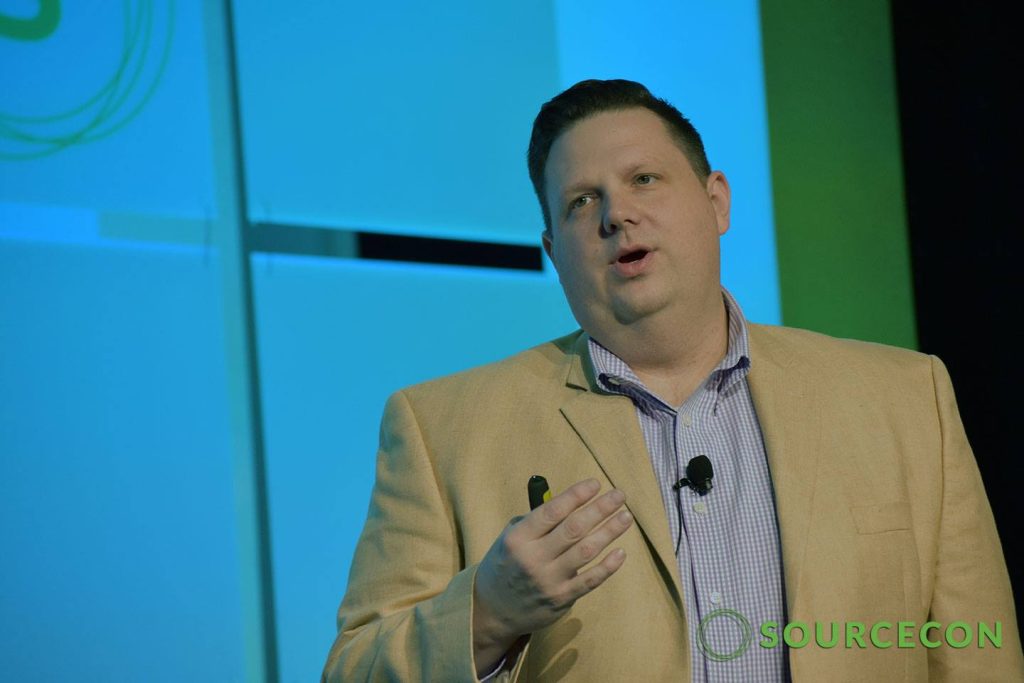SourceCon is always chocked full of great speakers and insightful sessions, and this year was no exception. It’s always a great channel for discovering the newest trends and understanding how they’ll shape the future of what we do. One that was particularly revealing this year was Recruiting in the Machine Age, led by Jason Roberts, global head of technology and analytics at Randstad Sourceright.
He touched on what many in the recruiting and HR space have either come to love, fear or be confused by how smart machines are changing the way we do business. If technology and automation could take over almost half of what it takes to source, recruit and hire, what would that mean for HR and recruiting? And how has smart technology in other areas of the business changed what we’re hiring for? These are questions that our industry is still trying to answer as we adopt more technologies, but Roberts helped to shed light on what’s happening now and what it could mean for the future.
The resounding theme throughout his entire talk was that what got us here won’t get us there. In short, the way we’re sourcing, recruiting and hiring is changing; the jobs we’re filling have changed; the way we’re managing HR is changing. And what’s worked in the past won’t work in the future.
The new revolution
All these changes are because we are smack dab in the middle of the fourth industrial revolution, Roberts said. We’ve seen changes like this before, first when mechanization, water power, and steam power were developed, then again when mass production, assembly lines and electricity became the norm. Before this last revolution it was computers and automation, a change that many of us lived through, and now it’s the world of cyber-physical systems that’s causing a seismic shift. It’s fresh and a bit intimidating now, but so were all the other developments that changed the world.
Roberts shared that this new industrial revolution has impacted 47% of jobs in the US. In fact, wages started slowing around the year 2000, while corporate profits continue to rise. Right now, nearly 45% of all work could be automated using existing technology, and that adds up to about $2.6 trillion a year in wages just in the US. But he also said that this new age is revealing to us where we need humans and where a more cost-effective and highly productive technology could be used. As it turns out, machines and humans are good at different things. Machines succeed at repetitive tasks and anything that can be expressed as rules, such as taxes or qualifying for a mortgage. On the other hand, humans have the irreplaceable skill of advanced pattern recognition, which helps with things like judging emotion or driving.
How it’s changing recruiting
For recruiting, this means that all the various tasks we perform, from background checking to advertising, lie somewhere on a scale between being almost exclusively rules-based and easy to automate, and being creativity, emotion or dexterity based, making them harder to automate. The exciting part about this fourth industrial revolution is that there are some technologies already available today, and much more coming in the future, that are allowing recruiters to use the skills they excel in and outsource the tasks that they don’t add value to. Roberts told attendees about the tools Randstad Sourceright has been taking for a spin, like bot based interview scheduling, a fairly comprehensive recruiting robotics tool called gr8 people, and matching technologies Brilent, Monster Match and Restless Bandit. It’s all about using technology to do the things that humans can’t do better than a machine.
Just like this new industrial revolution has shed light on what humans do well versus what machines do well, it’s also become more apparent where the real value add is for recruiters. Before we had all these amazing tools at our fingertips, there was high value in a recruiter who could match well, communicate consistently and write “standard legalese job descriptions,” as Roberts said. Today, machines can handle all those things. Now the real value lies with someone who can add the unique human element, developing branding and creative, conducting behavioral assessments and writing killer job descriptions that help machines do better matching. Roberts shared that it will serve recruiters well to align themselves with these high value-add activities.
This principle of developing skills for the future of recruiting come down to Roberts final, and possibly most important, point: that human touch is more important than ever. By 2020, 85% of customer interactions will be managed without humans. This makes not only human touch points more valuable but also creates new expectations and demands. In the end, he said, having a smart mix of tech and touch enables us to bring customer and talent experience to a new level, and creates opportunities for the future.

